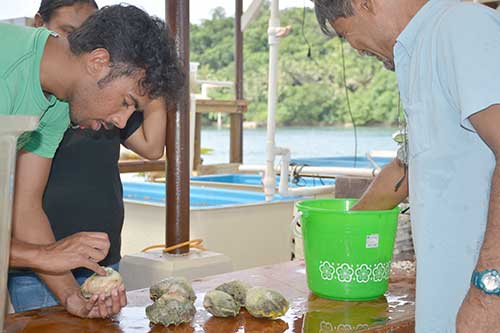- Research
Giant Clams are Abundant and Widespread in Palau, New Study Finds
A recently published study led by former PICRC researcher Lincoln Rehm reports that, in spite of pressures from tourism and fishing, giant clam populations remain abundant and healthy throughout Palau. The study attributes Palau’s healthy clam populations to conservation measures such as marine protected areas and bans on exporting clams.
Current PICRC Research Office Assistant Randa Jonathan and former researcher Lincy Marino joined Rehm as co-authors.
The authors found that oruer was the most abundant clam species, followed by melibes and ribkungal. Kism, oktang and duadeb were less common.
Oruer, melibes and ribkungal were also found to be more abundant in Palau than other areas of Micronesia and the Indo-Pacific. Oruer in particular has become scarce in other Micronesian islands but remains dense in Palau.
Despite a fourfold increase in tourism in the past decade and rising fishing pressure, the implementation of marine protected areas and export bans seem to have succeeded in preserving Palau’s clams. The Palau Mariculture Demonstration Center has also likely reduced fishing of wild clams by supporting local clam aquaculture.

However, the authors also caution that Palau’s clam populations still face challenges. The study found low numbers of large adult oruer and ribkungal, which signals high fishing pressure and could limit the species’ ability to reproduce in the future.
To continue supporting these populations, and to replenish dwindling kism, oktang and duadeb, the authors recommend continued investment in clam aquaculture, restocking wild populations with farmed clams and implementing harvest limits. These measures could ensure that giant clams remain a valuable economic and food resource for Palau into the future.
For any questions about the study or if you would like a copy of this paper, please do not hesitate to contact the center at 488-6950 or reach us by email at [email protected] .


